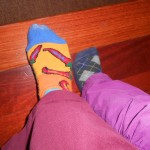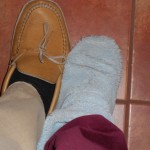What can your feet do? Check out The Foot Book: Dr. Seuss’s Wacky Book of Opposites. Opposites are not easy to get right, but they are an important language and thinking skill. They require brain connections not just for the meaning of each word or concept, but linking of one idea and it’s opposite.
 Some opposites are easy to learn, such as hot and cold, and some are much harder, for instance little and big. An object might be big when compared to one thing and only little when compared to another. There’s often more than one part. Being able to see the pictures in Dr.
Some opposites are easy to learn, such as hot and cold, and some are much harder, for instance little and big. An object might be big when compared to one thing and only little when compared to another. There’s often more than one part. Being able to see the pictures in Dr. Seuss’s opposite book adds to the information that children hear. Plus, the pictures in the book include lots of action. That helps even more. Now kids can see, hear and feel opposites. Lots of practice and repetition is needed to figure out opposites.
Seuss’s opposite book adds to the information that children hear. Plus, the pictures in the book include lots of action. That helps even more. Now kids can see, hear and feel opposites. Lots of practice and repetition is needed to figure out opposites.
Kindergarten readiness evaluations vary a great deal, but generally, kids will be able to correctly name simple opposites: cold and ___, or up and ____. Today, when you are interacting with your child, use a few opposites such as up-down; hot-cold; in-out,, yes-no, and more. First, the book is closed; what is the opposite?
